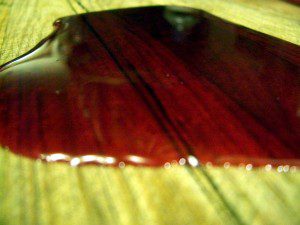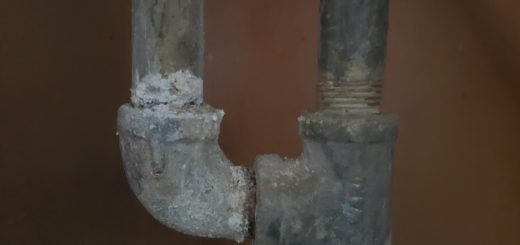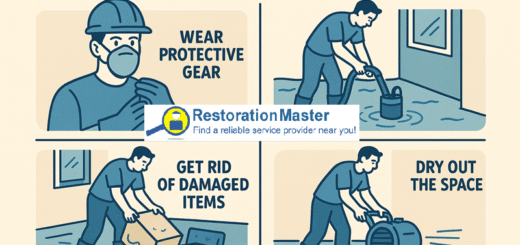How Bloodborne Pathogens Spread and Cause Disease and Infection
 When a traumatic incidentAn incident is an event or occurrence that causes damage, di... More occurs such as an accident or homicide, it is very common for biohazard materialsBiohazard materials are substances that pose a risk to human... More like blood to be found at the scene. Blood is the most commonly encountered bodily fluid as anything from a small cut to a violent crime can leadLead is a heavy metal that can be toxic to humans, especiall... More to a presence of blood. It is crucial to remember that blood can be very dangerous because it often contains harmful pathogensPathogens are microorganisms such as bacteria, viruses, or f... More such as virusesViruses are microscopic infectious agents that can only repr... More or bacteria that can easily spread disease. If you encounter blood at the scene of an accident or violent crime, you must call a certified biohazard cleaning professional to ensure that the scene is safely cleaned up and disinfected.
When a traumatic incidentAn incident is an event or occurrence that causes damage, di... More occurs such as an accident or homicide, it is very common for biohazard materialsBiohazard materials are substances that pose a risk to human... More like blood to be found at the scene. Blood is the most commonly encountered bodily fluid as anything from a small cut to a violent crime can leadLead is a heavy metal that can be toxic to humans, especiall... More to a presence of blood. It is crucial to remember that blood can be very dangerous because it often contains harmful pathogensPathogens are microorganisms such as bacteria, viruses, or f... More such as virusesViruses are microscopic infectious agents that can only repr... More or bacteria that can easily spread disease. If you encounter blood at the scene of an accident or violent crime, you must call a certified biohazard cleaning professional to ensure that the scene is safely cleaned up and disinfected.
It is important to know the dangers of bloodborne pathogensPathogens are microorganisms such as bacteria, viruses, or f... More and how they spread disease or infectionInfection is the invasion and multiplication of harmful micr... More to keep yourself safe in such a situation. Bloodborne pathogensPathogens are microorganisms such as bacteria, viruses, or f... More are disease causing microorganisms including virusesViruses are microscopic infectious agents that can only repr... More, bacteria, and fungus, that may be present in human blood. Exposure to bloodborne pathogensPathogens are microorganisms such as bacteria, viruses, or f... More could leadLead is a heavy metal that can be toxic to humans, especiall... More to a number of serious diseases such as hepatitis or HIV. There are many ways that these pathogensPathogens are microorganisms such as bacteria, viruses, or f... More can enter your body and because it is virtually impossible to tell if blood or bodily fluids are infected, it is best to avoid contact with them altogether.
Disease and infections from bloodborne pathogensPathogens are microorganisms such as bacteria, viruses, or f... More are most likely to spread if the following conditions are present:
- A high amount of bloodborne pathogensPathogens are microorganisms such as bacteria, viruses, or f... More.
- A source in which the pathogensPathogens are microorganisms such as bacteria, viruses, or f... More can multiply, such as blood or bodily fluids.
- A way for the pathogensPathogens are microorganisms such as bacteria, viruses, or f... More to move from the source to the host.
- A point of entry for the pathogen to infect the host.
- A host that is vulnerable to infectionInfection is the invasion and multiplication of harmful micr... More or disease.
Professionals that provide biohazard cleanup services help prevent the transmission of disease or infectionInfection is the invasion and multiplication of harmful micr... More from bloodborne pathogensPathogens are microorganisms such as bacteria, viruses, or f... More by disrupting one or more of these conditions. Even though most harmful pathogensPathogens are microorganisms such as bacteria, viruses, or f... More come from blood, it is possible for other bodily fluids to contain these pathogensPathogens are microorganisms such as bacteria, viruses, or f... More, especially if they have been mixed with blood. This is why it is best to react to any bodily fluid as an infectious material and leave the cleanup to professionals.
The Spread of Bloodborne Diseases
As mentioned above, there are several ways that a bloodborne pathogen can make its way from the blood source to your body. You must understand the main ways in which these pathogensPathogens are microorganisms such as bacteria, viruses, or f... More spread to keep yourself protected:
- Direct Contact: Harmful pathogensPathogens are microorganisms such as bacteria, viruses, or f... More are transferred directly from an infected individual to another individual. This may occur if infected blood touches an exposed wound of a non-infected person.
- Parenteral Exposure: A sharp object that was exposed to infected blood pierces the body of a non-infected individual.
- Indirect Contact: The pathogensPathogens are microorganisms such as bacteria, viruses, or f... More are transferred to an individual that handles a contaminated object.
- Airborne Transmission: Infectious pathogensPathogens are microorganisms such as bacteria, viruses, or f... More are transferred through the air. It is rare for bloodborne pathogensPathogens are microorganisms such as bacteria, viruses, or f... More to be spread this way.
If you encounter the scene of an accident or violent crime like a homicide that contains blood, you must exercise extreme caution and avoid any contact with potentially infectious materials. It is best to leave biohazard and homicide cleanup to the licensed professionals that have the right cleaning products and protective equipment to safely restore the scene. Make sure you contact 911, as well as a certified biohazard cleaning professional as soon as you discover a scene containing blood or other infectious materials.












